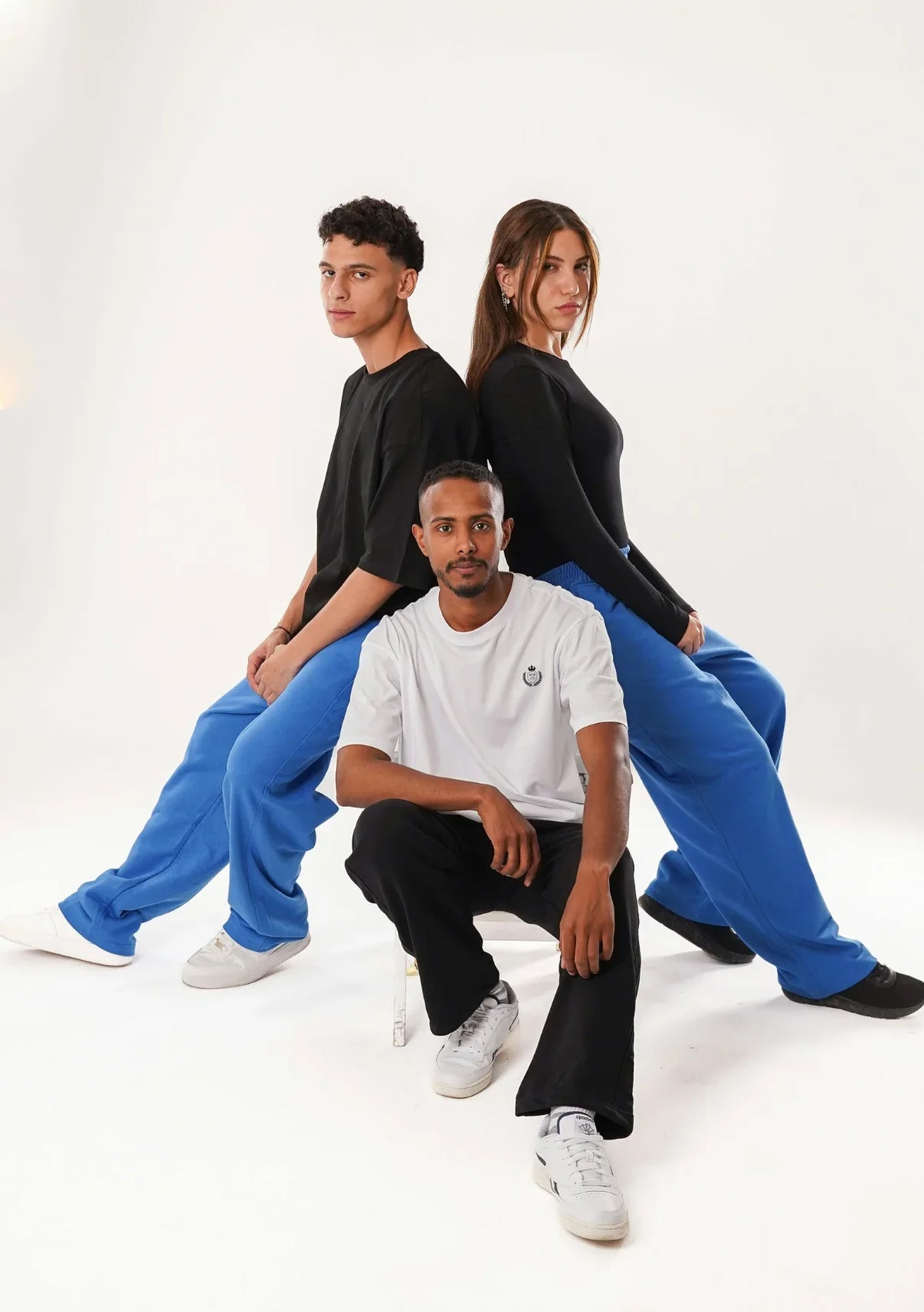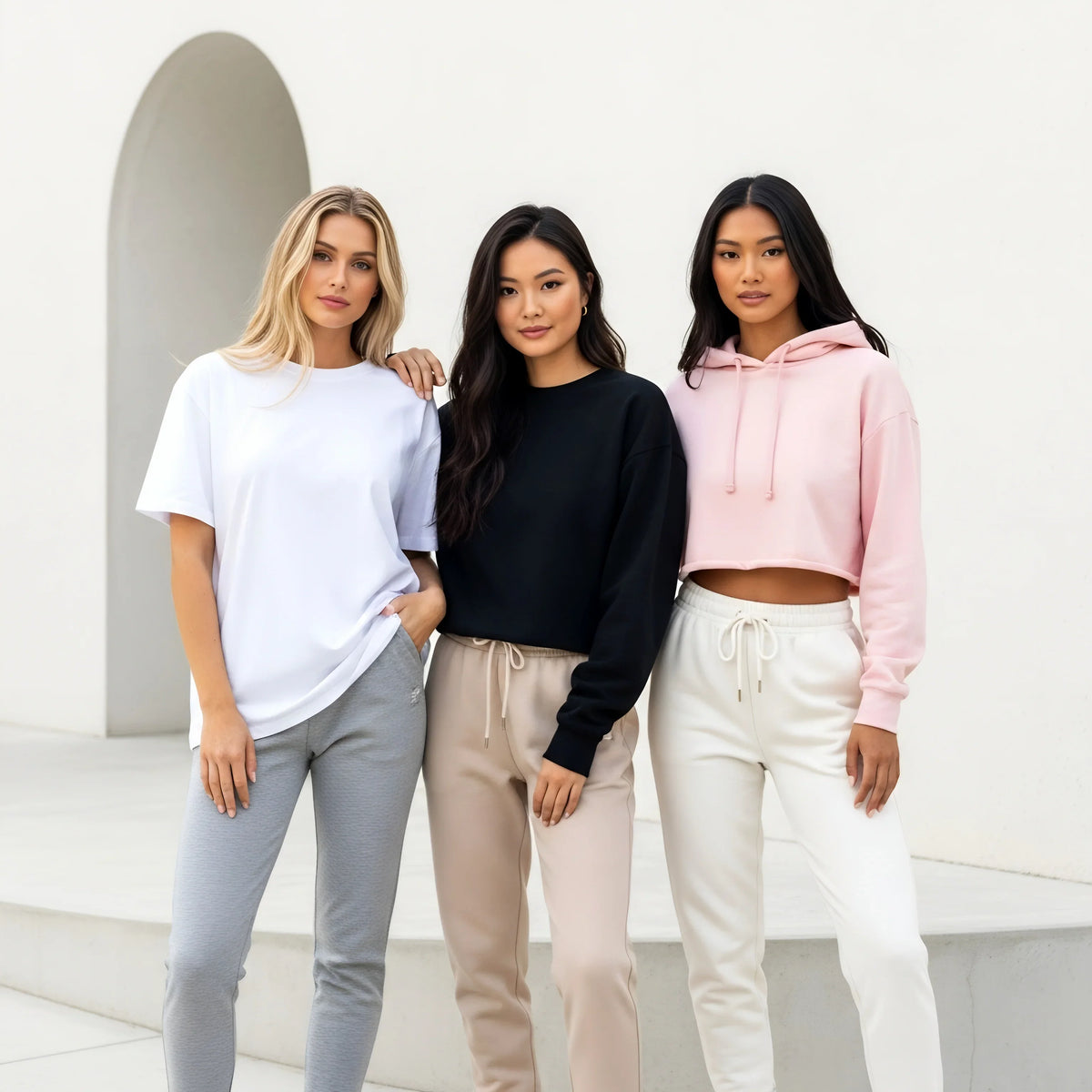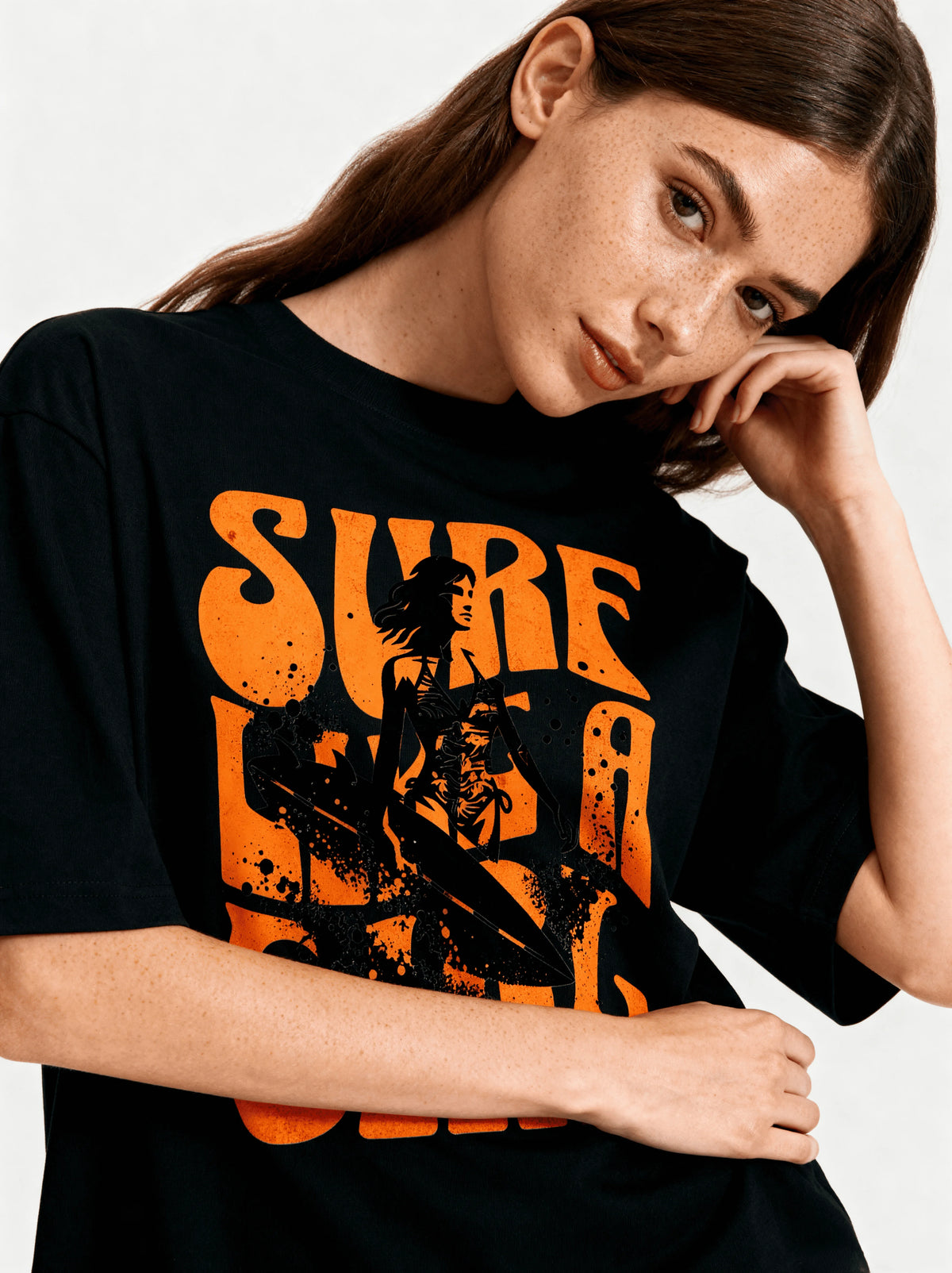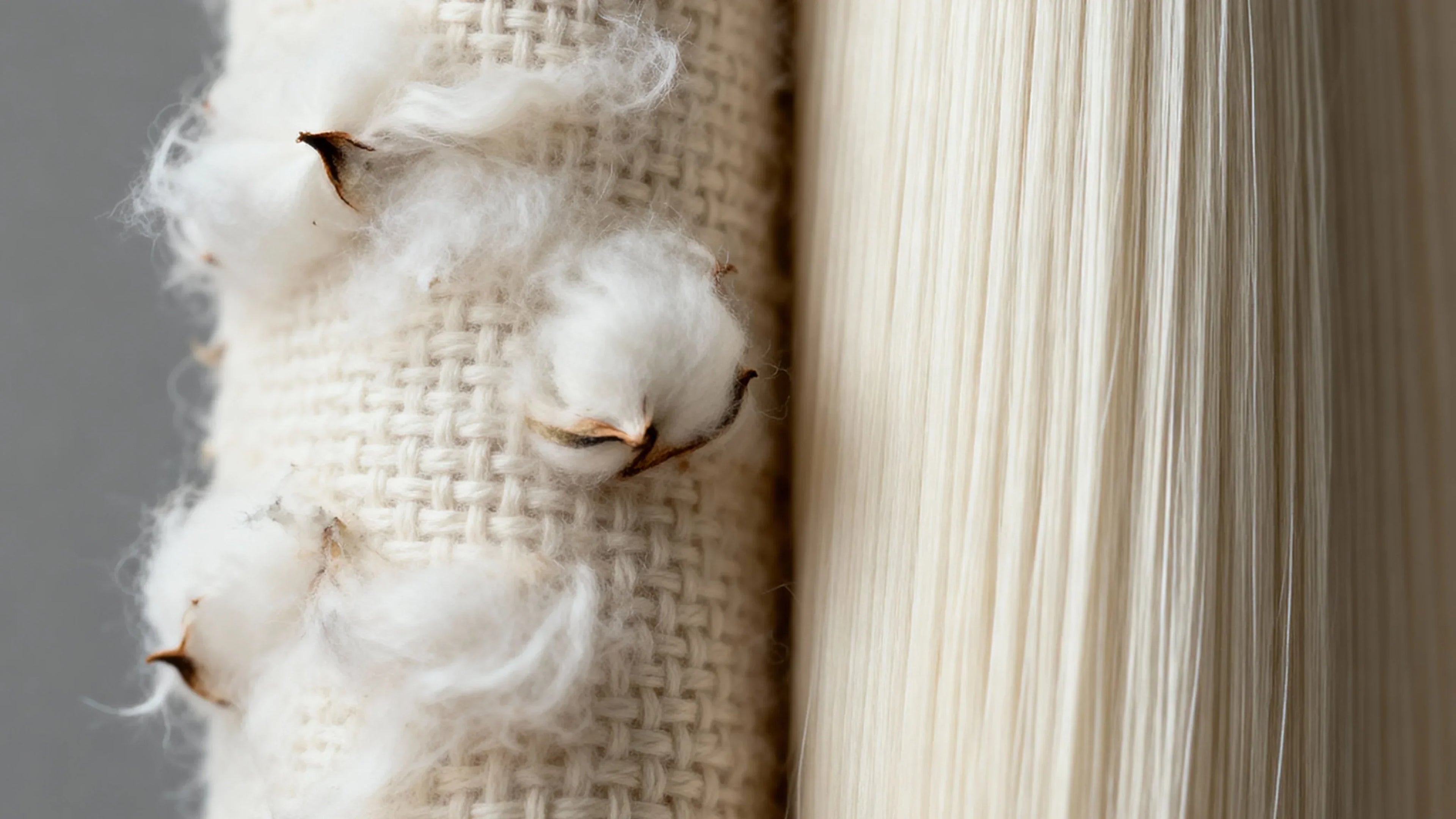Walk into any clothing store and you'll see labels screaming "100% Cotton!" as if that alone guarantees quality. But here's what most brands won't tell you: not all cotton is created equal. The difference between combed and carded cotton can mean the gap between a shirt that becomes your favorite go-to piece and one that's relegated to the back of your closet after three washes.
Most people have experienced this frustration. You buy what seems like a premium cotton tee, it feels decent in the store, but after a few washes it's pilling, stretching, and looking tired. Meanwhile, that other shirt you bought around the same time still looks and feels brand new. The secret? It's probably in how the cotton was processed before it ever became fabric.
Understanding the difference between combed and carded cotton isn't just fabric nerd territory - it's the key to making smarter clothing purchases that actually last. When you know what to look for, you stop wasting money on clothes that deteriorate quickly and start building a wardrobe that serves you for years.
What Actually Happens to Cotton Before It Becomes Your Shirt
Cotton doesn't go straight from the plant to your closet. Raw cotton fibers are messy, tangled, and filled with impurities - seeds, plant debris, and short broken fibers. Before cotton can become wearable fabric, it needs to be cleaned and aligned. This is where carding and combing come in.
The Carding Process: The Basic Treatment
Carding is the baseline process that all cotton goes through. Think of it as the minimum requirement to turn raw cotton into usable material. During carding, cotton fibers pass through wire-toothed rollers that:
- Separate tangled fibers and align them roughly in one direction
- Remove some larger impurities and debris
- Create a continuous web of fibers that can be spun into yarn
The result is carded cotton - functional, wearable, and perfectly adequate for many applications. It gets the job done. But here's the catch: carded cotton still contains shorter fibers, residual impurities, and isn't perfectly aligned. These imperfections show up over time as pilling, surface fuzz, and faster fabric breakdown.
The Combing Process: The Premium Upgrade
Combing is an additional step that only premium cotton undergoes. After the basic carding process, combed cotton goes through fine-toothed metal combs that:
- Remove short fibers (anything under approximately 1 inch gets filtered out)
- Eliminate remaining impurities and neps (tiny fiber tangles)
- Perfectly align all remaining long fibers in parallel
- Create ultra-smooth, uniform yarn with consistent strength
This extra processing step removes roughly 15-20% of the cotton by weight - the weak, short, problematic fibers that cause quality issues. What remains is pure, long-staple cotton that's been refined into something genuinely superior.
The Real-World Differences You Can Actually Feel
The technical descriptions matter, but what does this mean when you're wearing the shirt? The differences between combed and carded cotton show up in ways you notice every single day.
Fabric Surface Feel: The First Touch Test
Pick up a carded cotton shirt and a combed cotton shirt. Even before washing, the difference is apparent. Carded cotton has a slightly rougher texture with visible surface fibers. It's not unpleasant, but it's distinctly less refined. Combed cotton feels noticeably smoother - almost silky - because those short, protruding fibers have been removed.
This difference becomes more pronounced with washing. Carded cotton develops more surface fuzz and starts feeling rougher as those short fibers work their way to the surface. Combed cotton actually gets softer and more comfortable with each wash as the long fibers relax and settle.
Durability and Longevity: The Six-Month Reality Check
Here's where the difference becomes undeniable. Most people notice that basic cotton tees start looking worn within a few months of regular use. The fabric pills at friction points - under the arms, around the collar, where bags rest against your body. The shape starts distorting. Colors fade unevenly.
Combed cotton resists these problems significantly longer. Those perfectly aligned long fibers create stronger yarn that maintains structural integrity through dozens of washes. The fabric holds its shape better, pills far less, and maintains color vibrancy because the dye adheres more uniformly to the smoother fiber surface.
A quality combed cotton tee can easily last 2-3 years of regular wear while still looking presentable. A comparable carded cotton piece might start showing age within 6-12 months. Over time, the cost difference becomes negligible - you're simply replacing carded cotton items more frequently.
Pilling Resistance: Why Some Shirts Stay Smooth
Pilling is that annoying fuzzy ball formation that makes clothes look old and worn. It happens when short fibers work their way to the fabric surface and tangle with each other through friction. Since carded cotton retains those short fibers, it's inherently more prone to pilling.
Combed cotton dramatically reduces pilling because those problematic short fibers have been removed during processing. The long, aligned fibers stay integrated in the yarn structure rather than working loose. This doesn't make combed cotton completely pill-proof, but the difference is substantial.
Color Vibrancy and Fade Resistance: The Wash Test
The smoothness of combed cotton yarn affects how dye adheres to the fabric. Smooth, uniform fibers accept dye more evenly and hold it more securely. This means combed cotton typically has richer initial colors and maintains them better through repeated washing.
Carded cotton, with its irregular surface and short fibers, creates a less uniform dyeing surface. Colors may look slightly duller initially, and they tend to fade more noticeably with washing as those surface fibers - which hold dye less securely - wear away.
The Weight Factor: GSM and Why It Compounds the Difference
Here's where things get interesting. The combed versus carded distinction becomes even more important when you consider fabric weight, measured in GSM (grams per square meter). A lightweight 140 GSM carded cotton tee will feel and perform very differently from a heavyweight 260 GSM combed cotton piece.
Understanding Fabric Weight Categories
Lightweight (140-180 GSM): These are your basic, often disposable-feeling tees. In carded cotton, they're fine for undershirts or pieces you don't care about long-term. In combed cotton, they can actually work as quality summer pieces that remain breathable while maintaining durability.
Medium Weight (180-220 GSM): This is the standard range for most everyday tees. The difference between carded and combed becomes very noticeable here. Carded cotton at this weight can feel substantial initially but breaks down faster. Combed cotton at this weight hits a sweet spot - enough structure to look good, enough quality to last.
Heavyweight (220-300+ GSM): This is premium territory. Heavyweight combed cotton creates that substantial, quality feeling that elevates basic pieces into wardrobe staples. Some brands work in the 260-400 GSM range specifically because this weight combined with combed cotton processing delivers that "armor-like" comfort - substantial enough to feel premium, refined enough to drape naturally. When you find heavyweight combed cotton, you've found clothing that's built to last years, not months.
Heavyweight carded cotton exists but is less common - the inherent weaknesses of carded cotton become more problematic in heavier fabrics, and the pilling issues intensify.
Super-Combed Cotton: When Brands Go the Extra Mile
Some premium brands take combing even further with super-combed or double-combed cotton. This involves additional passes through finer combs, removing even more short fibers and creating exceptionally uniform yarn. The result is cotton that approaches luxury fabric territory.
Super-combed cotton represents the pinnacle of cotton refinement before getting into specialty varieties like Supima or Pima. It's noticeably smoother, more resistant to wear, and maintains its properties even longer than standard combed cotton. When you encounter this in clothing, it's usually a sign the brand is serious about fabric quality.
Why Brands Don't Always Tell You the Difference
Here's an uncomfortable truth: most brands don't advertise whether their cotton is carded or combed. If a label just says "100% Cotton," it's almost certainly carded. Premium brands that use combed cotton make a point of mentioning it because it's a legitimate quality differentiator.
This silence serves a purpose. Carded cotton is significantly cheaper to produce - that extra combing step adds cost and reduces yield. For fast fashion brands operating on thin margins, combed cotton isn't economically viable at their price points. They rely on consumers not knowing the difference.
When you do see "combed cotton" or "super-combed cotton" on a label, it's worth paying attention. Brands that call this out are typically confident in their fabric quality and want informed customers to recognize the value.
The Economics: Is Combed Cotton Worth the Price Premium?
Combed cotton products typically cost 20-40% more than equivalent carded cotton items. At first glance, this seems like a significant premium. But the math changes when you factor in longevity and wear quality.
The True Cost Calculation
Consider two basic tees purchased at the same time:
- Carded cotton tee: ₹500, looks worn after 8 months, replaced annually
- Combed cotton tee: ₹700, maintains quality for 2-3 years with regular wear
Over three years:
- Carded cotton cost: ₹1,500 (three replacements)
- Combed cotton cost: ₹700 (one purchase still going strong)
The combed cotton option costs less than half while providing consistent quality throughout its lifespan. You're not paying a premium - you're making a more economical choice that happens to also be more sustainable.
The Sustainability Angle
The longer something lasts, the less environmental impact it has per wear. Combed cotton's durability means fewer items entering landfills, less manufacturing demand, and reduced resource consumption over time. The initial processing requires slightly more energy, but this is more than offset by the extended lifespan.
For anyone concerned about the environmental footprint of their wardrobe, choosing combed cotton over carded makes measurable difference. You're buying less frequently, discarding less, and supporting production methods that prioritize quality over volume.
How to Identify Quality Cotton When Shopping
Since brands don't always clearly label their cotton processing, you need to develop an eye for quality indicators. Here's what to look for when evaluating cotton garments.
Read Between the Lines on Labels
Explicit mentions: If a brand uses combed cotton, they'll usually say so. Look for terms like:
- "100% Combed Cotton"
- "Super-Combed Cotton"
- "Premium Combed Cotton"
- "Long-Staple Combed Cotton"
Vague language that suggests carded cotton:
- Just "100% Cotton" with no other qualifiers
- "Soft cotton" (softness alone doesn't indicate combing)
- "Pure cotton" (technically true but uninformative)
The Feel Test
Run your hand across the fabric surface. Combed cotton has a noticeably smoother, more uniform texture. You shouldn't feel significant surface fibers or roughness. The fabric should feel refined, not just soft.
Check the inside of the garment too. Combed cotton maintains smoothness on both sides, while carded cotton often has a rougher interior with more visible fiber ends.
The Price Reality Check
While exceptions exist, extremely cheap cotton basics are almost never combed. The processing costs make it economically impossible. If you're seeing cotton tees priced below ₹400-500, they're almost certainly carded cotton.
This doesn't mean expensive equals quality - overpriced carded cotton exists too. But very cheap cotton basics have to cut corners somewhere, and that somewhere is usually the cotton processing.
Brand Reputation and Transparency
Brands serious about fabric quality are usually transparent about their materials and processes. Look for detailed product descriptions that specify fabric type, weight (GSM), and processing methods. Brands that invest in combed cotton want you to know about it.
When brands are vague about their fabrics - especially at higher price points - that's often a red flag. If they're charging premium prices, they should be willing to explain what you're paying for.
The Combed Cotton Care Advantage
One underrated benefit of combed cotton is that it's actually easier to care for than carded cotton. Those long, strong, aligned fibers are more resistant to washing stress and maintain their properties with less fussing.
Washing and Maintenance
Combed cotton handles regular washing better without requiring special treatment. While you should still follow basic care guidelines - cold water, gentle detergent, avoid harsh chemicals - combed cotton is more forgiving if you occasionally forget and toss it in with a regular load.
The fabric also responds better to line drying and resists the shrinkage issues that can affect lower-quality cotton. The fiber alignment means the fabric maintains dimensional stability even with repeated wet-dry cycles.
Long-Term Appearance
Perhaps most importantly, combed cotton continues looking good with minimal effort. You don't need to carefully inspect every shirt for pilling before wearing it. You don't need to strategically rotate pieces to prevent visible wear patterns. The garments simply maintain their appearance through normal use and care.
This reduces the mental energy and time spent on clothing maintenance - a real quality-of-life improvement that's hard to quantify but easy to appreciate once you experience it.
When Carded Cotton Makes Sense
To be fair, carded cotton isn't inherently bad - it's simply a different quality tier appropriate for different purposes. There are legitimate situations where carded cotton is the right choice.
Budget-Conscious Basics
If you need basic undershirts, workout clothes that will get heavily stained, or pieces for home wear that you don't care about long-term appearance, carded cotton can be perfectly adequate. The durability difference matters less when longevity isn't a priority.
Children's Clothing
Kids outgrow clothes before they wear them out. Investing in premium combed cotton for rapidly growing children often doesn't make economic sense. Carded cotton can be the practical choice here.
Experimental Purchases
Trying out a new style or cut you're not sure about? Carded cotton keeps the stakes lower while you figure out if the piece works for you. If it becomes a favorite despite the fabric, you can upgrade to a combed cotton version later.
The key is being intentional. Choose carded cotton when it makes sense for your specific situation, not because you're unaware of the difference.
How Comfort-First Brands Approach Cotton Processing
When a brand builds its entire identity around genuine comfort rather than just aesthetics, fabric processing becomes the foundation. You can't promise all-day wearability and confidence through comfort if you're using cotton that pills after a month.
Take the approach some newer brands are taking - starting with super-combed cotton as non-negotiable, then building from there with bio-washing and pre-shrinking. The logic makes sense: those processes work more effectively on combed cotton because the uniform fibers respond consistently to treatment. The result is fabric that stays soft wash after wash, maintains its shape, and delivers the comfort that was promised.
This matters especially in heavyweight pieces (260-400 GSM range). Without proper combing, heavy cotton can feel stiff or rough. With super-combed processing, that same weight becomes substantial in the right way - structured but soft, durable but comfortable. It's the difference between a hoodie that feels like armor and one that feels like a burden.
The brands getting this right tend to be transparent about their fabric choices. They'll specify "super-combed cotton" or detail their GSM range because they want informed customers who understand quality. When you see that level of detail in product descriptions, you're probably dealing with a brand that takes fabric seriously.
CozyVora exemplifies this approach - they openly discuss using super-combed cotton, specify GSM weights, and explain their bio-washing process. It's not about bragging; it's about helping customers understand what they're actually getting. When your brand philosophy centers on "comfort as the foundation of confidence," the fabric processing has to back that up. Otherwise, it's just marketing.
Making Informed Cotton Choices Going Forward
Now that you understand the real differences between combed and carded cotton, you can make more informed decisions about where to invest your clothing budget. This knowledge changes how you evaluate "100% Cotton" claims and helps you identify genuine quality.
Your Cotton Quality Checklist
When considering cotton purchases:
✅ Check for explicit combed cotton labeling - If it doesn't say "combed," assume it's carded
✅ Evaluate the price-to-quality relationship - Very cheap cotton can't be combed cotton
✅ Consider your intended use - Invest in combed cotton for pieces you'll wear frequently
✅ Feel the fabric - Combed cotton has noticeably smoother surface texture
✅ Research brand practices - Look for transparency about materials and processing
✅ Factor in GSM - Heavyweight combed cotton offers the best durability and feel
Building a Sustainable, Quality Wardrobe
The shift toward valuing combed cotton over carded is part of a broader movement toward intentional, sustainable consumption. When you buy fewer, better pieces that last longer, you're making an economic choice that also happens to be environmentally responsible.
Start by upgrading your most-worn basics. The everyday tees, the go-to hoodies, the pieces you reach for repeatedly - these deserve combed cotton quality. As you replace worn items, gradually shift toward combed cotton options. Over time, your entire wardrobe elevates without requiring a complete overhaul.
The Bottom Line: Cotton Processing Matters More Than You Think
The difference between combed and carded cotton isn't marketing hype or marginal quality variation. It's a fundamental processing distinction that affects every aspect of how a garment looks, feels, and performs over its lifespan.
Most people have experienced the frustration of clothes that don't last, that pill and fade and lose their shape too quickly. Often, the culprit is carded cotton masquerading as quality just because it says "100% Cotton" on the label. Once you understand what to look for, you stop falling for inadequate basics and start building a wardrobe of pieces that actually serve you long-term.
The next time you're choosing between two cotton items and one costs a bit more, check if that extra cost comes from combed cotton processing. If it does, you're not paying a premium - you're making the smarter long-term investment. Your wardrobe, your budget, and your daily comfort will all benefit from making this distinction.
Quality cotton processing isn't luxury. It's simply what cotton should be when brands choose to do it right.
Ready to Experience the Combed Cotton Difference?
Now that you understand what separates basic cotton from premium combed cotton, you can make informed choices about where to invest in your wardrobe. Look for brands that are transparent about their fabric processing, specify GSM weights, and explain their quality standards.
Super-combed cotton pieces prove that comfort and durability aren't compromises - they're what happens when brands choose to do fabric right from the fiber level up. From bio-washed, pre-shrunk heavyweight fabrics to construction that prioritizes how clothes actually feel during extended wear, quality starts with the cotton processing.
Brands like CozyVora demonstrate what's possible when comfort-first philosophy meets genuine fabric quality - pieces that justify their place in your wardrobe through performance, not just promises.
CozyVora — Comfort Embraces Elegance






